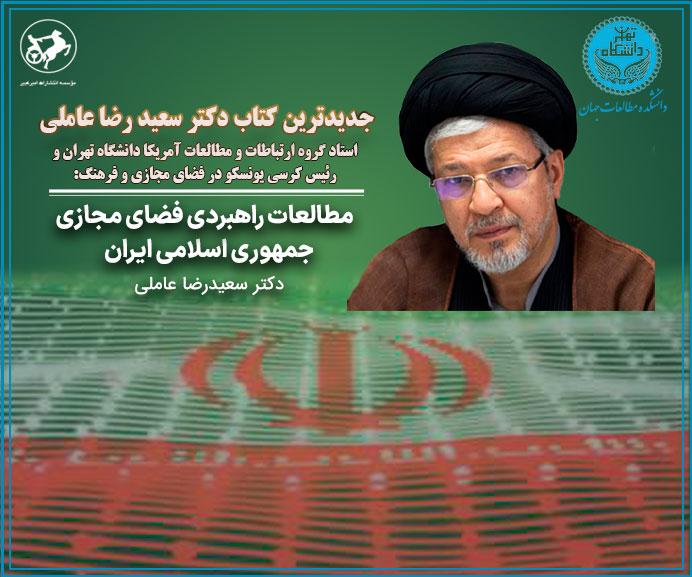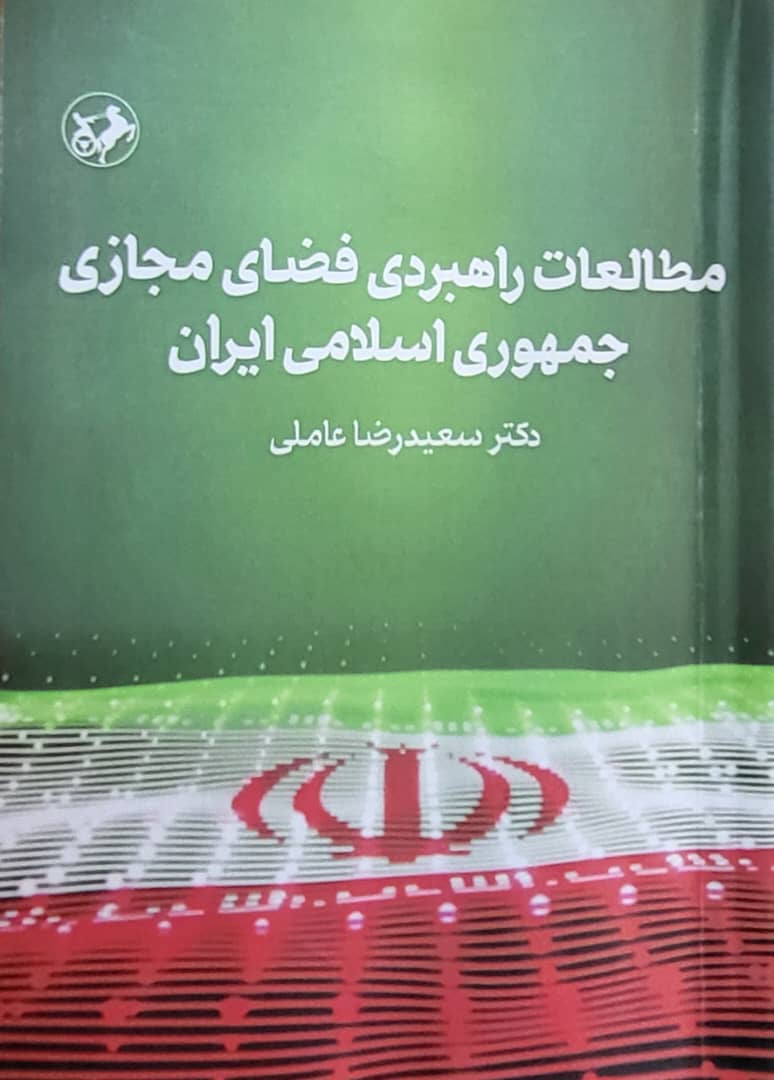


16 03 2025 08:42
News Code : 72867246
View Count : 1397
The latest book by Dr. Saeed Reza Ameli, Professor of Communications and American Studies at the University of Tehran and Chairholder of the UNESCO Chair on Cyberspace and Culture, titled "Strategic Studies on the Cyberspace of the Islamic Republic of Iran", was published by Amir Kabir Publishing at the end of the Iranian year 1403 (March 2025).
According to Fars News, this 390-page volume is based on a national research project on the strategic virtualization of Iran’s governance system. It was developed in collaboration with the Supreme Council of Cyberspace and aims to provide a strategic roadmap for the cyberspace of the Islamic Republic of Iran.
The book opens with a detailed introduction titled “A Framework for Explaining the Determinants of Iran’s Cyberspace Based on a Unified Dual-Space Approach to Sustainable Islamic-Iranian Resistance-Oriented Development: The Continuum of Resistance in Economy, Politics, and Culture.” This section outlines the roadmap for a dual-space (physical and virtual) model of integrated national progress, identifying internal and external factors that shape Iran’s cyberspace and emphasizing the need to understand them through a culturally grounded and value-sensitive strategic methodology.
Within the paradigm of “dual-spacization of the world”—a concept Dr. Ameli has developed since 2003—and his model of “Integrated Dual-Spatial Sustainable Islamic-Iranian Development”, the book lays out a six-stage framework for designing a national cyberspace strategy. These stages are:
Contextual Research: Including spatial studies, surveys, experiential research, policy analysis, comparative studies, futures studies, and trend analysis
Environmental Analysis: Covering socio-cultural, economic, political, legal, and technological contexts
Expert Consensus: Prioritization through engagement with thought leaders and specialists
Policy Approach Determination: Using value-assessment matrices (SPACE Analysis)
Goal Setting
Strategy Formulation: Through Quantitative Strategic Planning Matrix (QSPM)
These six phases are thoroughly explained in the introduction, with a visual summary presented in the conclusion of the book.
Chapter 1: Methodology for Strategic Planning
Offers a step-by-step practical guide to conducting SWOT analysis and policy extraction using SPACE as a quantifiable and evaluative method, aimed at overcoming uncertainties inherent in traditional SWOT models.
Chapter 2: Operational Approach to Environmental Analysis
Provides a multi-level environmental scan—national, regional, and international—to identify key influencing factors.
Chapter 3: Analysis of Socio-Cultural Factors in Cyberspace
Discusses the dual-space transformation of culture and its management within an integrated Islamic model, concluding with ten key strategic socio-cultural priorities.
Chapter 4: Economic Analysis of Cyberspace
Examines economic productivity in a dual-space system and presents a strategic assessment that results in ten major economic strategies.
Chapter 5: Political Analysis of Cyberspace
Reviews political theories relevant to cyberspace—geopolitics, cyber diplomacy, global democratization, and cyber warfare—and identifies ten strategic priorities.
Chapter 6: Technological Factors
Reviews cutting-edge technologies and Iran’s global standing in cyberspace technology, followed by a strategic technology roadmap.
Chapter 7: Legal Dimensions of Cyberspace
Analyzes the legal infrastructure, programs, and e-government processes, ending with legal strategic priorities.
Chapter 8: Security Dimensions of Cyberspace
Defines cybersecurity concepts like information assurance and critical infrastructure protection, assesses Iran’s cybersecurity index, and proposes ten strategic security priorities.
The conclusion of the book consolidates foundational cyberspace values and presents definitive priorities across infrastructure, programming, and content layers of Iran’s cyberspace governance model.
Indigenous and Value-Based Model:
Offers a unique framework grounded in Iran’s cultural and ideological context for strategic analysis and policymaking in cyberspace.
Strategic and Operational Depth:
Combines theoretical insight with practical application, ensuring strategies are robust, actionable, and based on expert consensus.
Comprehensive and Multidimensional Approach:
Considers all layers and elements—cultural, economic, political, legal, technological, and security—offering readers a holistic understanding of cyberspace governance.
Methodological Rigor:
Emphasizes the use of reliable, scientifically validated methods, making the book a trustworthy resource for researchers and policymakers.
Scholarly and Practical Authority:
Dr. Ameli, a leading figure in cyberspace and intercultural communication studies, has authored over 59 books in Persian and English and has extensive experience in cyberspace governance and regulation in Iran.
This book is not just an academic contribution—it is a strategic manual that can serve policymakers, scholars, managers, and those engaged in national cyber governance, helping them design precise, actionable, and locally adapted strategies for a resilient digital future in Iran.